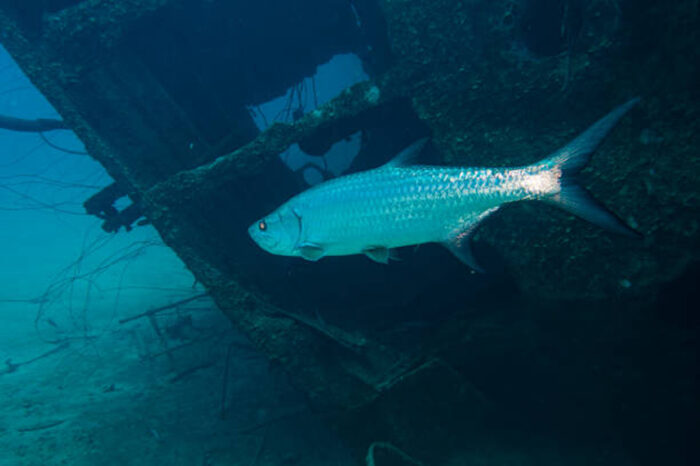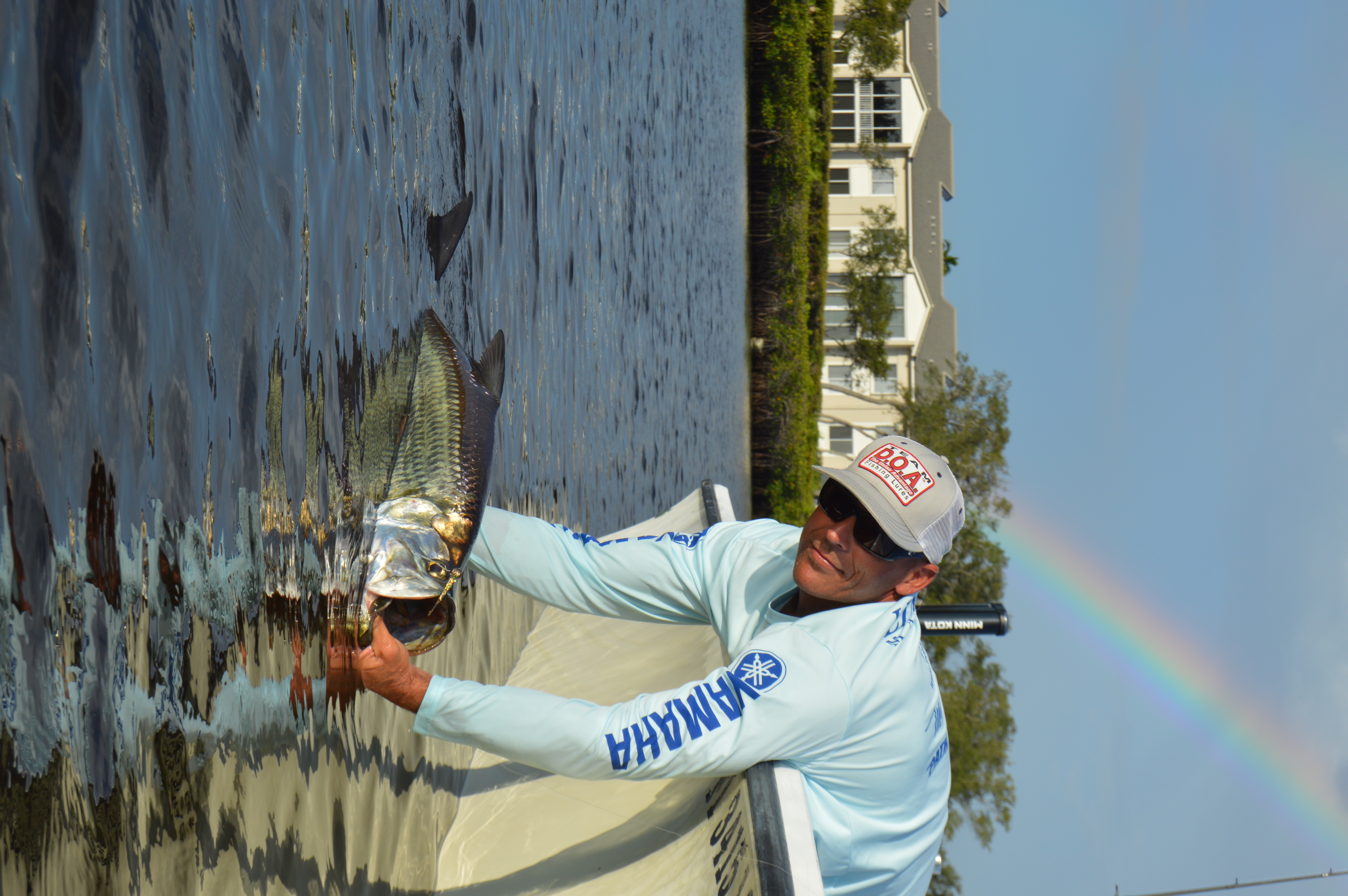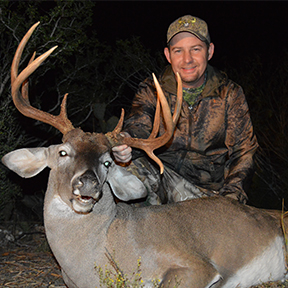Tarpon on Tarpon Off
An endless-summer chasing Florida tarpon awaits
August is without a doubt the hottest month of the year. It’s only 9:00 a.m. and already my shirt is drenched in sweat. From the bow of his boat, I can feel the humidity rising as Captain Ed Zyak poles us through a narrow creek lined in mangrove trees. Slowly we glide around each rooted bend until arriving at a pool of stagnant backwater. Its surface mirrors the ambient conditions above; warm, motionless and seemingly void of life. Suddenly a fish breaches the calm for a gulp of air and I ready my cast.
“Not yet,” he whispers, as another trail of bubbles emerges closer.
“There!” he shouts, and hurriedly I pitch my lure towards the cruising shadow where unfortunately it lands on top of it.
“Darn,” I think, frantically reeling it back in.
“Two off the bow,” he points.
This time I lob the offering just ahead of it as instructed, and within seconds, my rod is bent towards an explosion of water. Sailing high into the air, the fish’s bright reflective armor gleams like polished steel writhing in flight.
“Rod tip down,” he advises, as my catch reaches the height of its ascent.
Too late. The lure pops loose, and with a huge splash, the beast disappears leaving only ripples. Behold, my first encounter with Megalops.
Location
While not the iconic waters of Boca Grande Pass or the azure blue of the Florida Keys, the area extending from Fort Pierce, Fla. south to Jupiter, known as the Treasure Coast, has been on fire this year. Schools of ravenous poons have provided anglers with plenty of aerial excitement all summer long. At the epicenter of the action is Captain Ed Zyak of DOA Lures who’s kept busy putting clients on fish within the backwater creeks, channels, and canals of the Indian River Lagoon near his home town of Stuart.
Tarpon are the early-birds found rolling and feeding at first light. The backwater fish are darker-colored, in contrast to the larger beach bruisers that carry a bright distinctive green hue across their backs. Tarpon have a relatively high tolerance for low-salinity conditions and come equipped with a special swim bladder that allows them to breathe air and survive in low-oxygen areas. This allows for smaller poons to venture deep into a variety of areas like residential canals and creek branches, which can receive a heavy amount of freshwater inflow, especially during the summer months.
Larger tarpon are migratory, located mostly near shore and on the move in pods heading due north. Happy fish roll along in a classic daisy chain formation swimming with their backs out of the water as they feed outside the surf-line. However, once spotted, these guys can be quite deviant, making themselves readily visible, yet refusing any offer you present. Many times this encounter quickly disintegrates into a hurry-up-and-wait game, as anglers become mesmerized with pursuing a large, visible quarry that isn’t willing to bite. The result is a mad scramble to get ahead of the school, get off two or three casts tops (if you’re lucky) as they pass by, then crank up and chase them down to repeat the process.
Tarpon Terminology Poonology
Poon – Slang for Tarpon also referred to as the silver king or Sabalo
Buggy Whip – Fly rod and reel – the long rod and swirling fly line appear similar to the whip used in horse-drawn carriages of the past
Jumped – Just as it sounds. Tarpon are incredibly fickle, and more commonly hooked than caught. One that’s hooked then “jumps” into the air is considered an accomplishment in itself
Tail Walking – similar to jumping, tail walking is when the majority of a leaping fish’s body is out of the water except for its tail and for a short amount of time the energy it expends gives the appearance to be walking on it as it fights to shake the hook
Chew – When a fish bites the offering placed in front of it
Laid up – Tarpon’s excuse for a hangover, unmoving fish sitting still. Usually suspended high in the water column
Bow to the King – bending at the waist to lower one’s rod each time a tarpon leaps into the air.
What to Use
Juvenile tarpon feed primarily on shrimp, small crabs, insects, and the tiny baitfish that inhabit their nursery waters. So, tempt younger fish with small quartered crabs and mullet in the 3- to 4-inch range. Place offerings on a 5/0 Trokar circle hook and fish them under a cork, or even a free line, in areas where fish are rolling. Your best bet, once fish are spotted, is to get ahead of the school, post up, and wait for them to come to you.
Artificials work well, too. A quarter-ounce DOA Terroreyze jig or 5/8 ounce DOA sinking BaitBuster in either pearl with green, or black-back, are ideal for deeper water drops where a quick vertical descent is necessary. Work the lures slowly just off the bottom with a steady retrieve.
For presenting to fish in backwater areas over very shallow vegetation, swimbaits and soft jerk baits are a great choice. The DOA 5.5 inch jerk bait in dark natural colors, rigged weightless using a 4/0 Lazer Trokar swimbait hook, works extremely well. Use a very slow twitch-and-pause motion allowing the bait to flutter naturally to create a more wounded baitfish appearance.
Gear
For backwater juveniles, Zyak recommends using a 3000 sized spinning reel with a smooth drag. The Shimano Stradic or Sustain are both top choices with a short 6 6’ rod.
“The shorter rod helps control casting accuracy in tight spaces between mangroves that tend to reach out and grab client’s lures,” he says.
For backwater juveniles, Zyak recommends using a 3000 sized spinning reel with a smooth drag. The Shimano Stradic or Sustain are both top choices with a short 6 6’ rod.
“The shorter rod helps control casting accuracy in tight spaces between mangroves that tend to reach out and grab client’s lures,” he says.
Spool up with a 15-pound braided line and attach, via a double uni-knot, a 3-foot section of 30-pound fluorocarbon leader to the lure. This protects the line from the fish’s abrasive mouth. A thirty-pound leader is the minimum to use on the small guys. However, the larger the leader and clearer the water, the more likely you are to put off the bite. So a size compromise is in order when evaluating clarity.
Let it Rain
Afternoon showers are a given during Florida’s summer season. If severe enough, they can force you off the water in a hurry. But in the backwater creeks and sloughs where juvenile tarpon congregate, the rain comes as a godsend. Depending on the severity, raindrops can provide a certain amount of surface agitation. This can temporarily elevate low DO (dissolved oxygen) levels in shallow areas, putting fish in a frisky mood. It also cools down overheated anglers and water temperatures in the process. Of course, thunderstorms are an entirely different situation, and we recommend taking shelter immediately when encountered.
For inshore fly gear, try using either a 9 or 10-weight with floating line and a 10-foot tapered leader attached to a 30- to 50-pound fluorocarbon bite tippet, depending on the size of fish and water clarity.
For battling open water heavyweights, Zyak opts for a 12-weight rod.
“For ocean fish, I use intermediate lines for deeper water and increase the bite tippet up to 40 to 60 pounds,” he says.
For flies, sinking crab designs and black clouser patterns are the norm for quick presentations.
“I encourage tarpon clients to learn how to double haul their line. This increases the speed of your cast, the distance, and helps punch through during windy conditions,” Zyak explains.
Also, wear strong sunscreen and insect repellant when chasing tarpon in the backwater sloughs all day. Sunsect makes a good combination product that’s grease-free.
Be forewarned: Tarpon fishing is not for everyone. For all of the glory depicted in the pursuit of tarpon, there’s an equal amount of frustration at the end of the process. Trips are exclusively species-specific. Rarely do by-catch opportunities arise to break the monotony of hours that pass without a bite. So, if you’re anxious to put one in the air, I strongly recommend hiring a reputable guide like Zyak to get you pointed in the right direction.
Capt. Ed Zyak
Stuart Florida
Zyak@DOALures.com
772-485-3474
Dustin spent his childhood exploring the bass-rich ponds that once blanketed the Central Florida landscape. At age 16 he headed east to hone his skills on redfish and sea trout in the famous Mosquito Lagoon. After high school He graduated with a B.S. Degree in Environmental Science began his career as a Senior Environmental Engineer while also traveling the U.S. as a freelance outdoor writer in search of fishing and hunting adventures. Over the past decade hundreds of Dustin’s works have been published in numerous well known travel, fishing, hunting and outdoor publications throughout the United States, Australia, and the United Kingdom.



